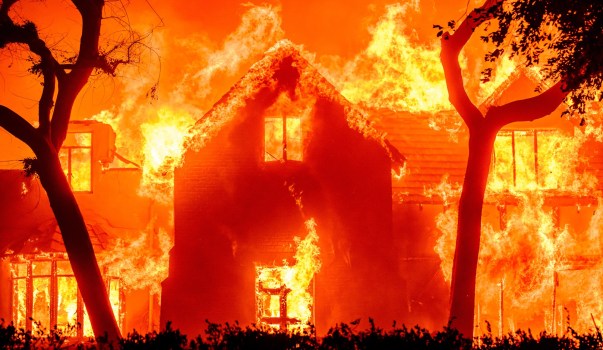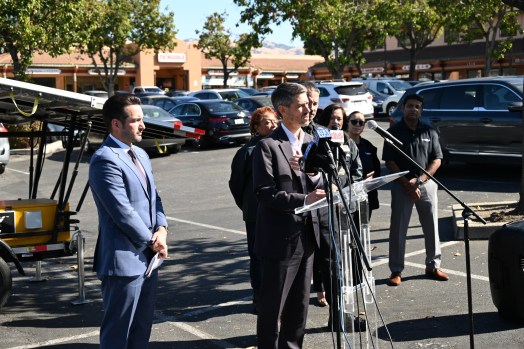Concerns that California’s already unstable home insurance market may experience even more upheaval are being heightened by the destructive wildfires that are raging across Los Angeles County this week.
Following nearly ten years of more devastating, climate-driven wildfire seasons, changes aimed at preventing insurers from leaving the state were implemented shortly before the flames that destroyed thousands of houses. The billions of dollars in anticipated additional insurance claims in Southern California, however, may result in fewer coverage options and fewer policies bought for homes in the Bay Area and beyond, according to experts, as the changes have not yet fully taken effect.
Nancy Watkins, an actuarial and insurance specialist with the consulting firm Milliman, stated that certain businesses will be negatively impacted by the wildfires in Los Angeles. That might put them in a position where they have to repeal some of their current programs in the near future.
![]()
The fatal fires, however, may result in significantly higher premiums for policyholders in almost every region of the state, according to consumer activists.
Harvey Rosenfield, the founder of the advocacy group Consumer Watchdog, based in Los Angeles, stated, “I am confident that the insurance companies will demand incredibly higher rate increases.”
Insurers have already increased prices and terminated hundreds of thousands of policies around the state in recent years. Wide-ranging effects are anticipated to result from an insurance crisis triggered by the most recent fires.
In addition to rate increases and coverage loss for current homeowners, families who have trouble finding insurance would not be able to obtain a mortgage to purchase a property. Less purchasers could result in lower home values in high-risk fire regions, such as the Santa Cruz Mountains and rural Northern California, placing a burden on local tax bases and impeding efforts to recover from the state’s persistent post-pandemic economic slump.
Tim Linerud, whose stilt-built home is nestled in a Belmont canyon, is concerned about how insurers will react to the damage caused by the current fires. According to weather forecaster AccuWeather, as of Thursday afternoon, the fires had destroyed or damaged over 7,000 buildings, potentially resulting in at least $135 billion in total economic losses. Five fatalities were reported.
Over the years, we’ve seen problems with insurance companies canceling contracts due to the property’s landscape and construction, Linerud said. Therefore, they will take any justification provided by an insurance company to bail out, and I’m concerned about that.
State Farm, the biggest home insurance provider in California, which stopped issuing new policies in the state beginning in 2023, refused to comment on how the fires would affect its operations in this state.
The business added in a statement that helping our clients during this tragedy and ensuring the safety of our customers, agents, and staff affected by the flames are our top priorities at the moment.
Allstate responded similarly, ceasing to increase its coverage in California in 2022.
The company stated that it is assisting clients who have submitted claims and has teams prepared to relocate to California as soon as it is safe to do so.
In response to inquiries regarding the fires’ effects on the larger insurance market, the California Department of Insurance on Wednesday announced an emergency declaration issued by Governor Gavin Newson that would shield homeowners in the immediate vicinity of the fires from losing their insurance for a year due to wildfire risk.
In order to attract those insurers back to the state, stabilize the overall market, and guarantee that fewer homeowners be removed from their policies, the agency has also completed adjustments in recent weeks.
Following long-standing industry demands, the new regulations will soon permit insurers to increase rates in response to the growing threat posed by climate change and to pass on to their clients a larger portion of their expenses spent after catastrophic catastrophes. Companies are expected to write additional policies in locations that are at risk of fire, where many homes have lost coverage, in return.
Consumer activists point out the rate-setting modification that permits businesses to employ forward-looking catastrophe modeling algorithms to compute rates, arguing that the pact will not significantly help struggling homeowners. They assert that this will allow insurers to increase costs through a mysterious procedure they compare to a “black box.” Advocates claim that businesses will feel more confident in raising homeowners’ premiums to compensate for their losses in the L.A. fires, even though state insurance regulators still need to authorize rate increases.
Despite the significant losses, Watkins, a consultant for the insurance sector, stated that the reforms should actually stop rate hikes based only on the recent fires. This is due to the fact that insurers are supposed to base new rates on forecasts for the future rather than past losses.
“I don’t believe that any fire, even one as big as the fires in Los Angeles, will have a direct effect on any homeowner’s base rates,” she added.
The potential impact of the flames on the California FAIR Plan, the state’s last-resort insurance program for people who are unable to obtain standard coverage, is another worry.
With support from private insurers, the number of homeowners on the state-mandated insurance pool has more than doubled to approximately 350,000 during the last six months. The FAIR Plan is now on the verge of going bankrupt as a result.
The plan probably included a large number of people who lost their homes in the L.A. infernos. Over 26,000 FAIR Plan properties are located in ZIP codes affected by the flames throughout Los Angeles County, per a Bay Area News Group examination of FAIR Plan data.
It’s feasible that insurers will raise premiums for all of their residential and commercial clients if they are unable to pay for those liabilities.
Last year, California FAIR Plan President Victoria Roach warned lawmakers, “There is no other way to say it: we are one event away from a large assessment.” Despite having a lot of exposure, we don’t have a lot of cash on hand.




